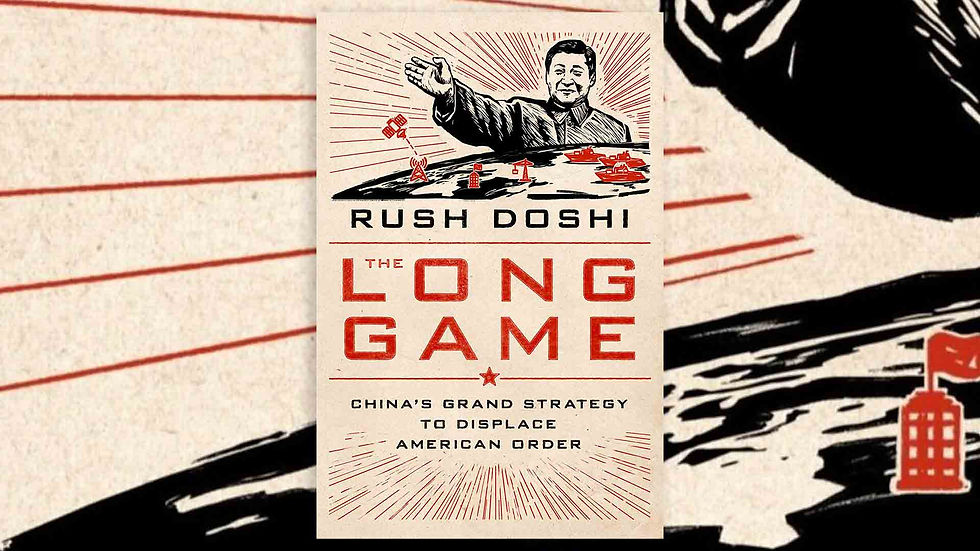The Power of Perception: Key Lessons from Alchemy by Rory Sutherland
- vickygunawan
- Mar 16
- 3 min read

Why do some brands become legendary while others struggle for attention? Why do people pay more for products that aren’t functionally better? In Alchemy: The Dark Art and Curious Science of Creating Magic in Brands, Business, and Life, Rory Sutherland reveals how irrationality, psychology, and perception shape consumer behavior far more than logic and data.
Sutherland argues that business success is less about engineering and more about psychology—small, unexpected tweaks in branding, pricing, and storytelling can lead to massive impact. Let’s break down the most powerful insights from this book and how we can apply them in marketing and branding.
1. People Buy Perception, Not Just Products
Consumers don’t buy things; they buy meaning, identity, and emotion attached to those things. A product’s perceived value is often more important than its actual features.
✅ Example: Red Bull doesn’t taste better than other energy drinks—it’s just branded better. Its premium pricing, unique can, and extreme sports sponsorship create an aura of exclusivity and power.
🚀 Takeaway: Don’t just improve products—change how people perceive them.
2. Small Changes in Framing Can Have a Huge Impact
How a message is presented shapes how people respond to it—even if the core offering stays the same.
✅ Example: In London, changing "Don’t litter" to "People like you don’t litter" significantly reduced littering. The wording made people feel socially accountable.
🚀 Takeaway: Frame messaging strategically—use social proof, urgency, or exclusivity.
3. The Smallest Tweaks Can Create the Biggest Impact
Consumers don’t always respond rationally—sometimes, minor psychological shifts make all the difference.
✅ Example: Uber’s moving progress bar reduces anxiety. Functionally, it’s unnecessary, but psychologically, it makes waiting feel shorter.
🚀 Takeaway: Optimize for perception, not just efficiency.
4. Logic Doesn’t Always Lead to the Best Decisions
We assume the best solutions are data-driven and rational, but sometimes, the most effective ideas are counterintuitive and emotional.
✅ Example: Instead of redesigning plane layouts to speed up boarding, one airline gave priority boarding to families with children—a psychological fix that solved an operational problem.
🚀 Takeaway: Don’t always rely on logic—embrace creative, counterintuitive solutions.
5. Emotion Drives Buying Decisions
Customers buy stories, feelings, and identity, not just functionality.
✅ Example: Apple doesn’t focus on specs—it sells a lifestyle of creativity and status.
🚀 Takeaway: Sell an aspiration, not just a product.
6. Price Creates Perception
A higher price often increases perceived value rather than deterring customers.
✅ Example: Luxury brands like Gucci and Rolex charge premium prices because exclusivity itself is a selling point.
🚀 Takeaway: Don’t compete on price—compete on perceived value.
7. Scarcity and Exclusivity Boost Demand
People value what feels rare and hard to get.
✅ Example: Supreme’s "limited drops" create hype, not because of product quality, but because scarcity fuels desirability.
🚀 Takeaway: Create exclusivity and a sense of urgency.
8. Success in Branding Is Psychological, Not Logical
Customers don’t need perfect products; they need emotionally engaging experiences.
✅ Example: People trust organic food labels even when scientific studies show no significant health benefits—because perception matters more than reality.
🚀 Takeaway: Win on psychology, not just features.
How to Apply Alchemy in Marketing & Branding
🔥 Change Perception, Not Just the Product
Example: A heavier bottle makes wine taste "better"—packaging affects experience.
🔥 Use Framing to Influence Decisions
Example: Instead of saying "This product costs $40," say "For just $1.33 a day, you get…"
🔥 Make the Unimportant Feel Important
Example: Handwritten "thank you" notes make products feel premium.
🔥 Leverage Scarcity and Exclusivity
Example: Luxury brands limit production to increase demand.
🔥 Sell an Identity, Not Just a Product
Example: Nike doesn’t sell shoes—it sells the identity of an athlete.
✔ People don’t buy products—they buy emotions, perceptions, and stories.
✔ The best ideas often seem counterintuitive—but they work.
✔ A small tweak in messaging or perception can make a huge difference.
By understanding how psychology, perception, and storytelling shape decision-making, we can create marketing that isn’t just effective—it feels like Alchemy. 🚀
@beetvemiona



Comments